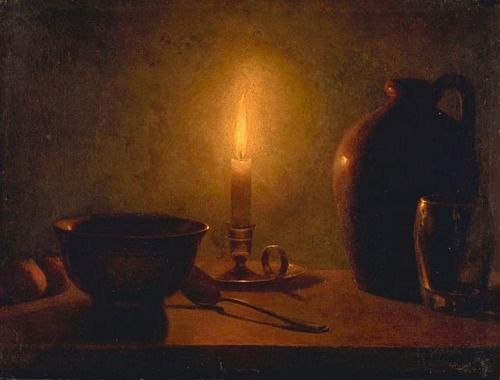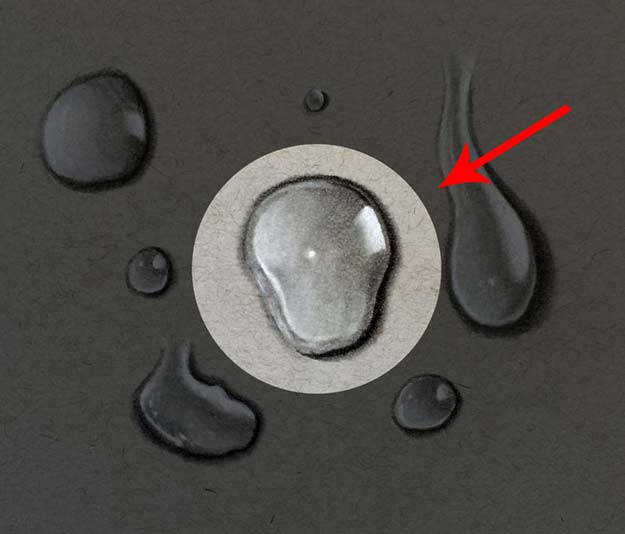The peculiarity of a person’s visual perception is to determine the shape and size of an object, depending on its degree of illumination. Chiaroscuro in the picture creates the illusion of three-dimensional space on a two-dimensional surface using light and dark shapes. Since light falling on an object is distributed unevenly and at different angles, the degree of illumination of its various sides also varies greatly. Chiaroscuro in a drawing is a combination of objective conditions on the basis of which a gradation of light and dark shades of light appears on the surface of an object. Realistic images can be created only by learning to understand and see how light and shadow are distributed according to the shape of the object in the surrounding world. The perception of the mass, volume, and location of an object depends on the correct work with chiaroscuro in the figure. But this alone is not enough - practice is also important. Start by studying the main components of chiaroscuro in a pencil drawing, but don’t stop there - continue to draw, improving your skills.

The light and dark side of the object
The subject is always divided into two large parts: a zone of light and a zone of shadow. The light zone or the bright side is the part of the subject located closer to the light source and taking on most of the light. A flat object has no shadow. Creating a drawing, the artist must immediately determine where the lightest part of the subject will be, and where the darkest part will be. The whiteness of the paper and the most saturated tone of the pencil are two limit points for tonal stretching. There is a contrasting stretch when a very light and very dark tone is taken. With a nuance stretch, two very close tones are taken. In good work, there is always only one place where there is a point that is as light as possible and one that is as dark as possible. These are tuning forks of light. Everything else is a stretch. Illumination depends on the angle of incidence of light - the smaller the angle, the less light falls on the surface.
Saturation of chiaroscuro
Saturation varies depending on the structure of the surface and the amount of light that enters it. If several objects are at different distances from the light source, the chiaroscuro in the picture will change depending on their distance. In addition, the light can be scattered and concentrate at one point. In the first case, the contrasts will be more pronounced and distinct. Closely located objects have a more contrasting chiaroscuro than those that are in the distance. Due to the characteristics of human perception, objects of different colors and their chiaroscuro can also visually differ.
Penumbra and its features
On objects of a rounded shape in the zone of contact with oblique rays of light, a smooth transition from the light to the dark forms, which is an intermediate state between light and shadow - penumbra. It is in this zone that you can see your own tone of the subject. On objects based on clear rectangular shapes, this zone is distinguished separately and lies between the light and dark sides. The border of chiaroscuro depends on the shape of the subject and can look very different. Usually it is fuzzy and consists of gradations of tone.
What is a shadow zone?
The shadow zone or dark side is part of the subject opposite the light source. Own shadow - a place where lighting does not fall. There is also a falling shadow - this is the darkest zone, it forms on the surfaces. Depending on the location of the source, it may fall on the plane where the object, background or other objects are located. Its shape depends on the subject itself and may vary due to the structure of the surface to which it is directed. The peculiarity of the falling shadow is that it is always a little darker than its own. Since light can be reflected from neighboring objects, the structure of it is heterogeneous. The falling and own shadows do not have to have clear boundaries - they consist of smooth transitions in tone. The light reflected from the surface of the object partially illuminates the shadow part and creates a reflex. Reflex is a peculiar illumination of a shadow, but it is always lighter than it and darker than light. At the edge of the form there will always be such a zone. The reflex is also present on the side of the object, which is located closer to the light source, but there it is less noticeable, and in the shadow zone it becomes more active. The shadow itself is not a solid spot with the same tone. Working with her in drawing is a special art.

The bright side of the object and its components
What parts of the figure with chiaroscuro will the bright side consist of? The place where it gets and from which the maximum amount of light is reflected is called a glare. It is most pronounced on glossy and convex surfaces. Further, the light will fade, as it were, and reduce the intensity until it goes into the penumbra zone. Slow transition from one shade to another is called gradation. Much depends on the amount of light and on the reflective surface. But in any case, the movement of the tone in the form will be smooth, and not with sharp transitions. Correct tone stretching is exactly what helps to convey chiaroscuro in a drawing. Light will gradually pass into the shadow zone, after which a reflex will arise. It is worth noting one feature - when working with chiaroscuro, the lines of the subject disappear. All transitions between the light and dark sides of the subject are created using tone stretching.
The laws of chiaroscuro in the figure
In order to trace the development of light and shadow on the form, create a sketch of the sphere. You can select objects yourself by arranging them on a sheet in any way, but it’s easier to start with a rounded shape. Draw a horizon line and outline a circle on the sheet. Choose the direction of the light, marking it on a sheet. Then on the circle we draw the approximate border of the separation of light and shadow. Remember that at the final stage of work, all lines will disappear. Having determined the angle of incidence of light, we note the approximate location of the incident shadow. The correct definition of the light source is one of the foundations of chiaroscuro in the picture.
Drawing with chiaroscuro step by step
Now apply a medium tone to the ball - it should not be too dark or too light, otherwise it will be difficult to make a smooth tone stretch. If you start with a medium tone, there will be no white spots in the picture, you can simply add a tone and change the gradation to a darker or lighter shade. Then create your own and falling shadow. Add a tone above the horizon. The horizontal surface on which the ball is located should be lighter than the vertical. Now create the gradation from the shadow to the light side. This transition should be soft, with smooth gradation around the circumference. At the fifth step, we darken the depth of the falling and our own shadow. Do not forget about the reflex and create the illusion of reflection of light at the base of the sphere. At the final stage, outline the highlight on the side that is closest to the light source. Remember that you do not need to create gradation to a pure white color. If everything is done correctly, the lines drawn in the first step should disappear, and the volume will be transmitted only by changing the depth of tone.

Work with light and shadow: conclusion
Having understood how chiaroscuro is created in a simple form, it will also be easier to understand how this happens with more complex objects. A plain circle without a shadow is perceived as flat. But it is worth adding at least two shadows: one's own and one falling, and perception changes immediately. Flare, partial shade, reflex add to a flat circle of volume and give it the effect of three-dimensional space. The basis of chiaroscuro in a pencil drawing is a tone stretch. In the process of creating a picture, it is important to remember that depending on the structure of the surface, color and degree of remoteness from the light source, the gradation of tone will vary. Glossy smooth objects with a light surface reflect light better, and the construction of chiaroscuro on them will differ from matte and darkened. Working in tone implies a lack of line. If something is darker and something lighter, a tone appears.